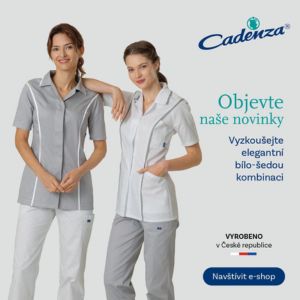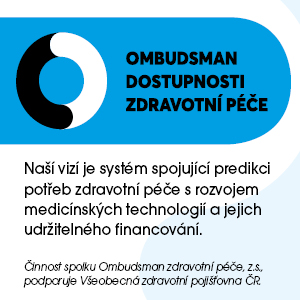


Číslo 4 / 2015
Pacemaker

An artificial pacemaker is a device used to treat disorders of the rhythm of the heartbeat known as bradycardia (heartbeat is too slow). In such situations, the heart may not be able to pump blood sufficiently with respect to the needs of the body, which results in a series of consequences.
Patient: Good morning, nurse. I've come to make an appointment. The doctor says I need a pacemaker.
Nurse: Good morning, Mr O'Neill. No problem, take a seat for a minute, I'll just check the schedule.
Patient: Thank you. Could you please tell me what a pacemaker actually is?
Nurse: Well, the doctor will explain everything to you. So, just briefly – a pacemaker is a small metal box with one to three electrodes. The pacemaker generates electrical impulses, which are subsequently sent to the cardiac muscle tissue through the electrodes, where they initiate the contraction of the heart.
Patient: Does it hurt?
Nurse: No, it doesn't.
Patient: And where is the box going to be placed?
Nurse: A pacemaker is usually implanted into the right or left side of your chest, just under the collarbone, and one or two electrodes lead to the heart chambers via the subclavian vein.
Patient: And how is the surgery performed?
Nurse: You will be laid on a special operating table, and have the upper part of the chest cleaned with an antibacterial solution. A disinfectant will be applied around the surgical wound and the rest of your body will be covered with sterile linen. There is going to be an amplifier of an x-ray image, which helps the doctor place the pacemaker electrodes in the exact position in the heart.
Patient: Is it going to hurt?
Nurse: No, it isn't. Virtually all implantations are performed under local anaesthesia. After the skin and the subcutaneous tissue is cut, one or two electrodes enter the puncture of the subclavian vein to the heart and, based on an x-ray check, the ends of the electrodes are inserted in the correct place in the heart. At the end of the surgery, the electrodes are connected to the generator, which is inserted subcutaneously, and then the wound is sewn up with absorbable stitches.
Patient: How long does it take?
Nurse: The whole surgery takes from about half an hour to one and a half hours.
Patient: I see. Well, thank you very much for the information.
Nurse: You are welcome.
|
device |
přístroj, zařízení; nástroj; prostředek |
|
disorder |
porucha, potíže; nepořádek, zmatek; nepokoje |
|
consequence |
důsledek, následek |
|
schedule |
časový plán, program, harmonogram |
|
actually |
vlastně, ve skutečnosti; dokonce |
|
briefly |
stručně, krátce, ve stručnosti |
|
to generate |
vytvářet, vyrábět, generovat, |
|
subsequently |
následně, potom, posléze |
|
through |
skrz, přes, prostřednictvím |
|
to lay |
položit; pokládat; klást |
|
wound |
rána, poranění, zranění |
|
to cover |
přikrýt; pokrýt; přiklopit; ukrýt |
|
linen |
prádlo; plátno, tkanina |
|
virtually |
prakticky |
|
to insert |
vložit, vsunout; zastrčit |
|
to sew |
šít, sešít |
Lekce angličtiny pro časopis Florence připravuje překladatelská agentura ACP TRADUCTERA (www.traductera.com).
Ilustrační foto, zdroj: http://www.wikiskripta.eu
Další články v tomto čísle
- Lidské srdce – toť chaos vesmíru (Thomas Carlyle)
- Rok 2015 – rok nové vlny prodlužování osvědčení k výkonu zdravotnického povolání bez odborného dohledu
- Jaké sestry potřebuje české zdravotnictví?
- Sestry v EU musejí být jednotně vzdělané
- Afrika skýtá velké bohatství, které můžeme pro naše zdraví využít
- Systém dálkové monitorace pacientů se srdečním selháním zachraňuje životy a šetří peníze
- Moderní technologie v domácí léčbě
- Práce sester na aferetické jednotce ÚHKT
- Adult Basic and Advanced Life Support
- Bodná poranění zdravotnických pracovníků v průběhu deseti let





















